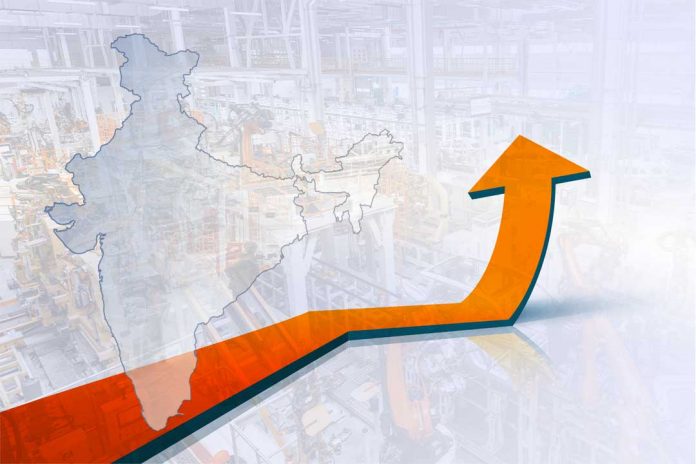Indian plastic manufacturers majorly rely on small products that have limited growth potential. With articulated investment and proper R&D, they can be major players in different sectors.
Modern life without plastic products is something impossible to imagine. This is one of the materials that is vehemently used in our daily lives. India’s plastic industry is highly fragmented and contributes a large part of the country’s SME sector. The majority of the Indian plastic product manufacturing industry is made up of small-sized players.
Interestingly, fueled by innovation and the government’s ambition of Atmanirbhar Bharat through the Make-in-India initiative, the country can be a major player in the global plastic products manufacturing industry. However, achieving that goal requires investment in market research and quality R&D for developing high-quality international standard products, which the current Indian plastic product manufacturing companies lack.
Despite having immense profit potential, the Indian plastic product manufacturers heavily rely on very basic products such as thin wall containers, spoons and forks, vegetable trays, crates, chairs and tables, etc., other small products. The scalability potential of these products is limited, while expansion potential is limited to the domestic market only. However, with a bit of investment and ideation, the Indian plastic product manufacturing industry can explore huge growth potential.
Global trade of plastic products tops around a whopping USD 1 trillion each year, or 5% of total merchandise trade around the world. This is 40% higher than the previous estimates and this trade segment involves virtually all the nations around the world, claims a study by UNCTAD. The primary forms of plastics make up the largest share of the trade in volume at 56%. This is followed by intermediate forms at 11%, intermediate manufactured goods at 5%, and final manufactured products at 21%. This clearly gives us an insight into the massive extent of plastic product trade in the world. Clearly, Indian plastic companies have a lot to explore in this space.
Growth opportunities for Indian plastic manufacturers
The global plastic product export in 2020 was dominated by 15 countries that shipped 81% of the total volume. China exported USD 28.9 billion worth of plastic items in 2020, contributing 33.9% of total exported plastic products. The second position was held by Germany that shipped USD 9.5 billion worth of plastic items in 2020, contributing 11.1% of total exported volume.
Interestingly, India being one of the key manufacturers in the world, the country has no position among the top 15 plastic product exporting countries. The top exporter China has increased its plastic product export since 2019 by a whopping 34.9%. The dominance of China in the plastic sector is backed by extensive R&D and huge amounts of investment into the quality products. The increased mechanical manufacturing procedure implementation helped the country’s plastic manufacturers to exponentially reduce production costs and scale production at a large volume.
There are multiple sectors available for the expansion of business for the Indian plastic companies. These sectors include automotive, pharmaceuticals, electrical equipment, consumer electronics, etc. These sectors use high-grade plastic, which can be produced in India locally. This would eventually allow domestic plastic product manufacturers to explore new business options and immense growth opportunities in both domestic and international markets.
What should be Indian company’s business approach?
To explore new business dimensions and sectors, the Indian plastic companies should first gather some insights into the industry worldwide. The focus should be on the sectors that have growth potential in the domestic market as well as in the international market also.
A key problem for the plastic product manufacturing companies in India is the scalability due to old machines that are operated manually. This results in slow production speed and a lack of scaling opportunity. Also, it results in higher manufacturing costs for them. Such issues will not help them to sustain in a highly competitive market for longer periods. This is why they have been limiting their product portfolio to very basic ones and fewer products as well. Other challenges they face include lack of market research and surveys, innovation to create new products, and low confidence to invest in new products. However, overcoming these problems could make great business prospects for these companies.
The sectors where plastic product manufacturers have immense growth potential include automotive, pharmaceuticals, electrical equipment, consumer electronics, etc. To tap the potential of scalable business in these segments, the plastic product manufacturers should take a bold and different approach compared to their conventional business strategy. After extensive R&D They should develop high-quality products for the sectors that are mentioned above.
Instead of traditional product marketing, plastic manufacturers should adopt OEM service route. They should approach the other brands or companies that have been using plastic components in their respective products either by importing from other countries or manufacturing by themselves or outsourcing. These companies should remember that in order to grab the market they have to develop the products that come promising similar high quality like the ones outsourced or imported from overseas.
Besides focusing on the quality, the manufacturers recommended adopting new marketing strategies to promote their services. Additionally, promoting the products & services through traditional marketing like listing them on trade portals or directory websites, they should also come up with individual and own websites that define their products & services following best design & marketing practices. Manufacturers also need to invest/hire marketing & branding experts for promotional & business development activities or outsource them to a trustworthy & reputed agency in order to generate some quality inquiries which they can transform into transactions.
Also Read:
- Starting a new Plastic Manufacturing Company? Here is your checklist.
- The How and Why of Creating New Product Ideas
- Free Trade Agreements – An Indian Perspective
- Fastest Growing Industries (Sunrise Sectors) in India
- Indian WWW Treatment Market to Experience a Boom with the increase in Private Investments
- Indian Defence Industry – A Whole New Business Avenue for Private Start-ups


